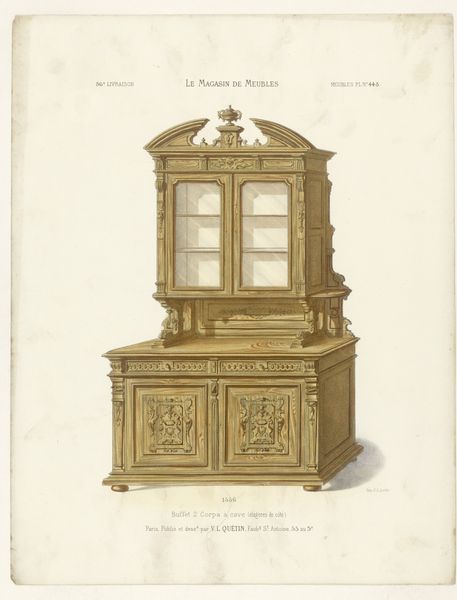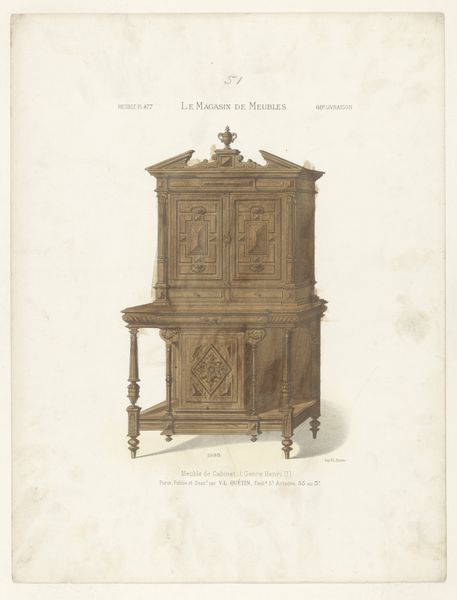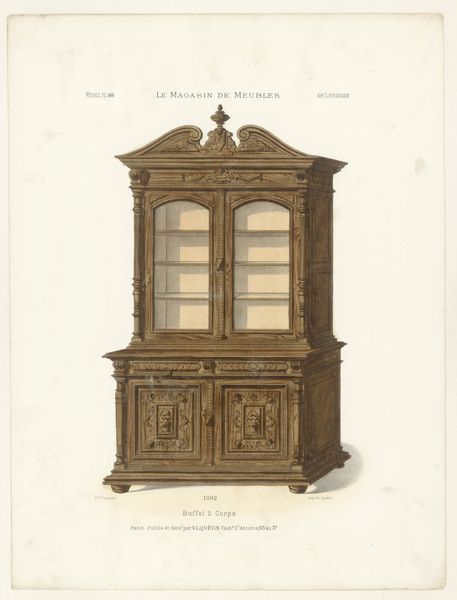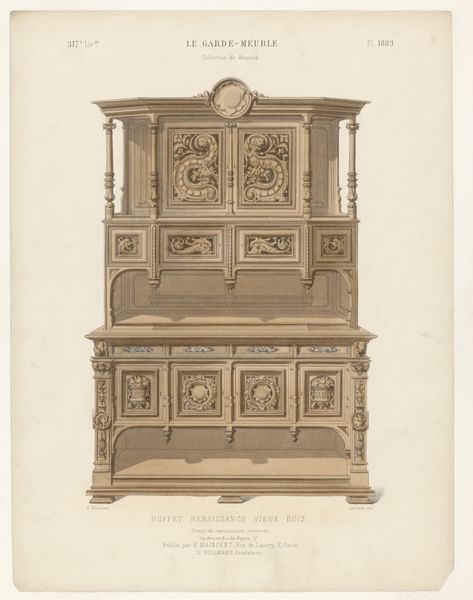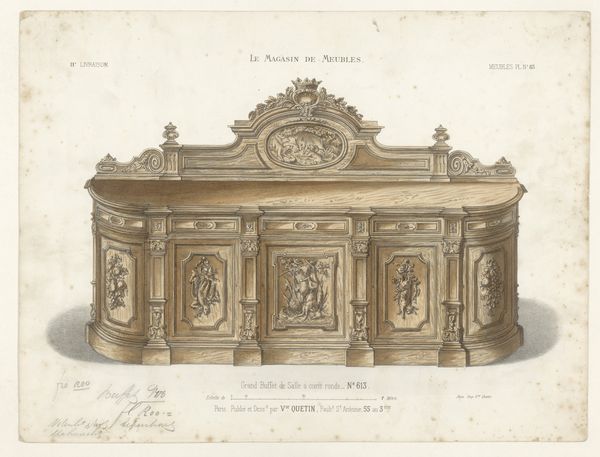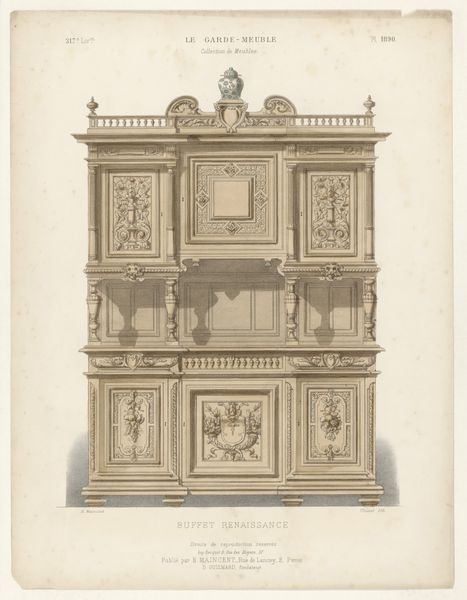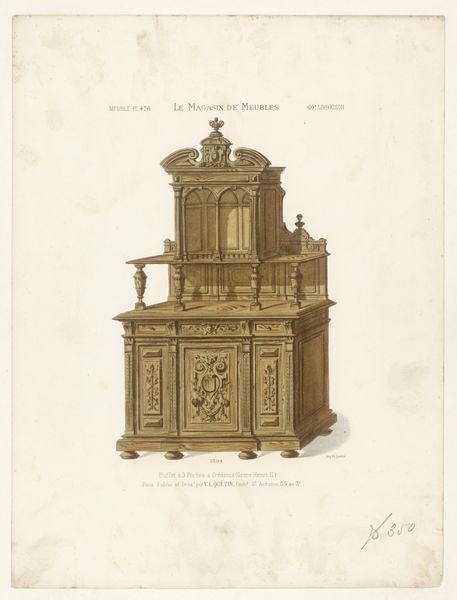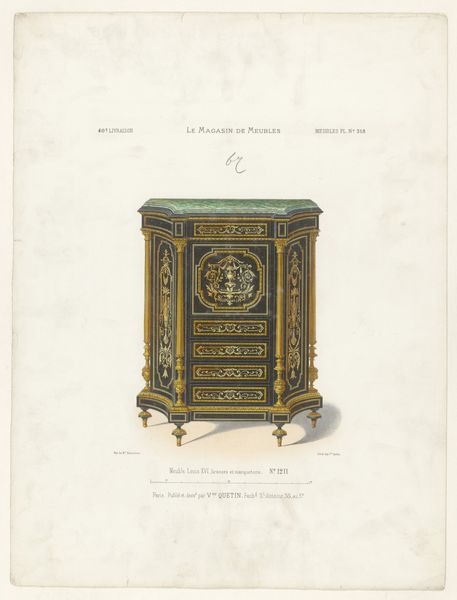
Dimensions: height 359 mm, width 272 mm
Copyright: Rijks Museum: Open Domain
Editor: Here we have an interesting drawing called "Buffetkast," made sometime between 1832 and 1877, attributed to someone anonymous. It looks like ink on paper, maybe a print as well? It has such ornate details, almost a bit whimsical. What do you see in this piece? Curator: The "whimsical" feeling comes, I think, from the use of Romantic-era decorative art styles, combined with earlier symbology. Note the stag imagery right at the top - what does the stag evoke for you? Editor: Well, I guess nobility, the hunt, maybe something masculine? Curator: Indeed. Consider the historical context – the rise of industrialization versus the longing for a more idyllic, perhaps imagined, past. The stag, along with the floral motifs, can be read as a yearning for a lost connection with nature and an idealized noble heritage. This piece becomes more than just a furniture design; it’s a container of cultural memory. Does it remind you of similar symbols from other eras? Editor: Now that you mention it, the floral arrangements are vaguely similar to ones in Medieval tapestries. Curator: Precisely! Artists and designers often pull from the symbolic language of the past to communicate values or desires in the present. The cabinet itself becomes a vessel for these accumulated meanings. It represents the intersection of commerce, domesticity, and a reaching back toward tradition. Editor: I never thought about furniture having that kind of weight before! It makes me look at all design differently now. Curator: Symbols speak when words fail, or perhaps, when words aren’t even necessary. The emotional response it generates within the viewer completes the cycle of meaning. It's like unlocking a secret code from the past, which informs our present.
Comments
No comments
Be the first to comment and join the conversation on the ultimate creative platform.
